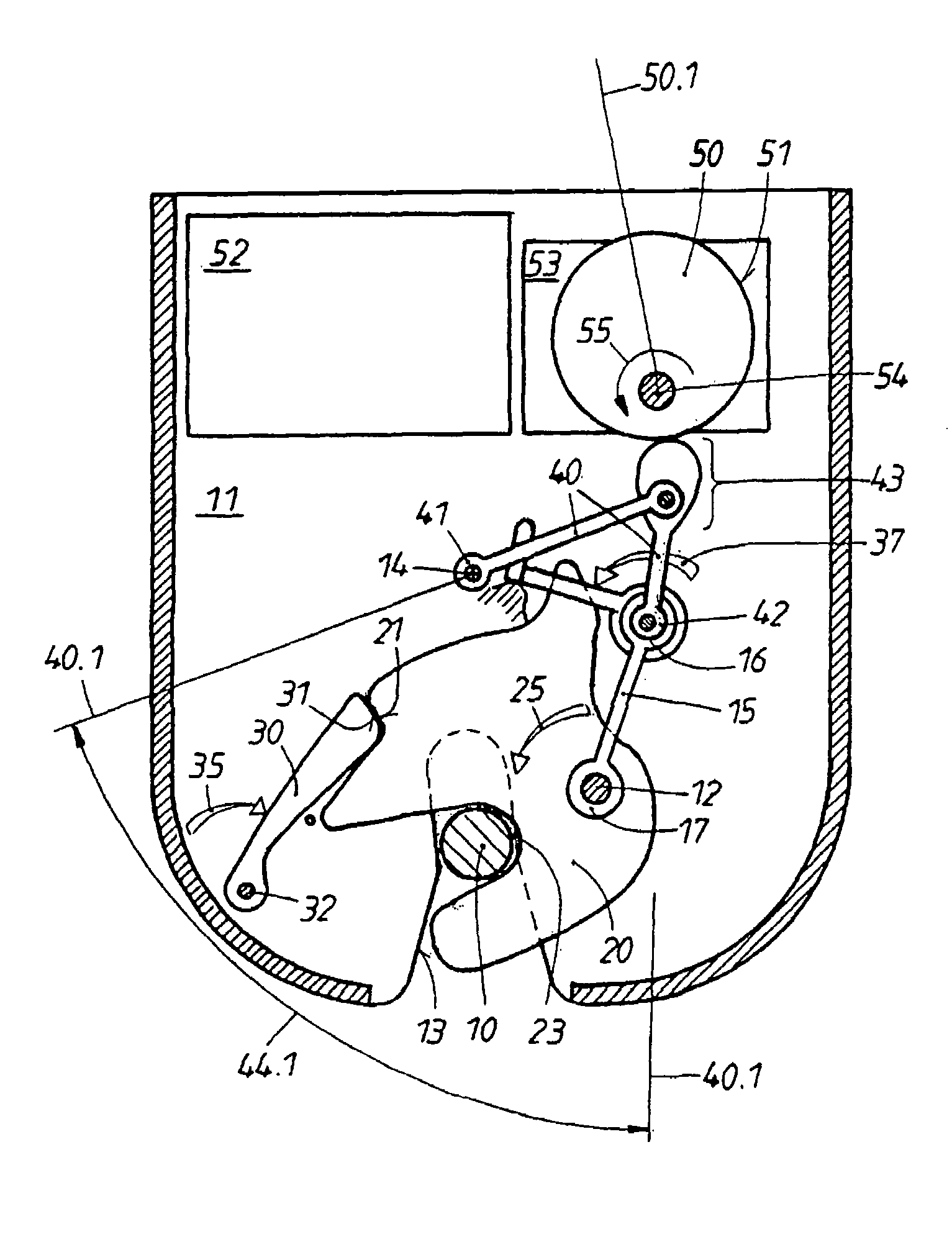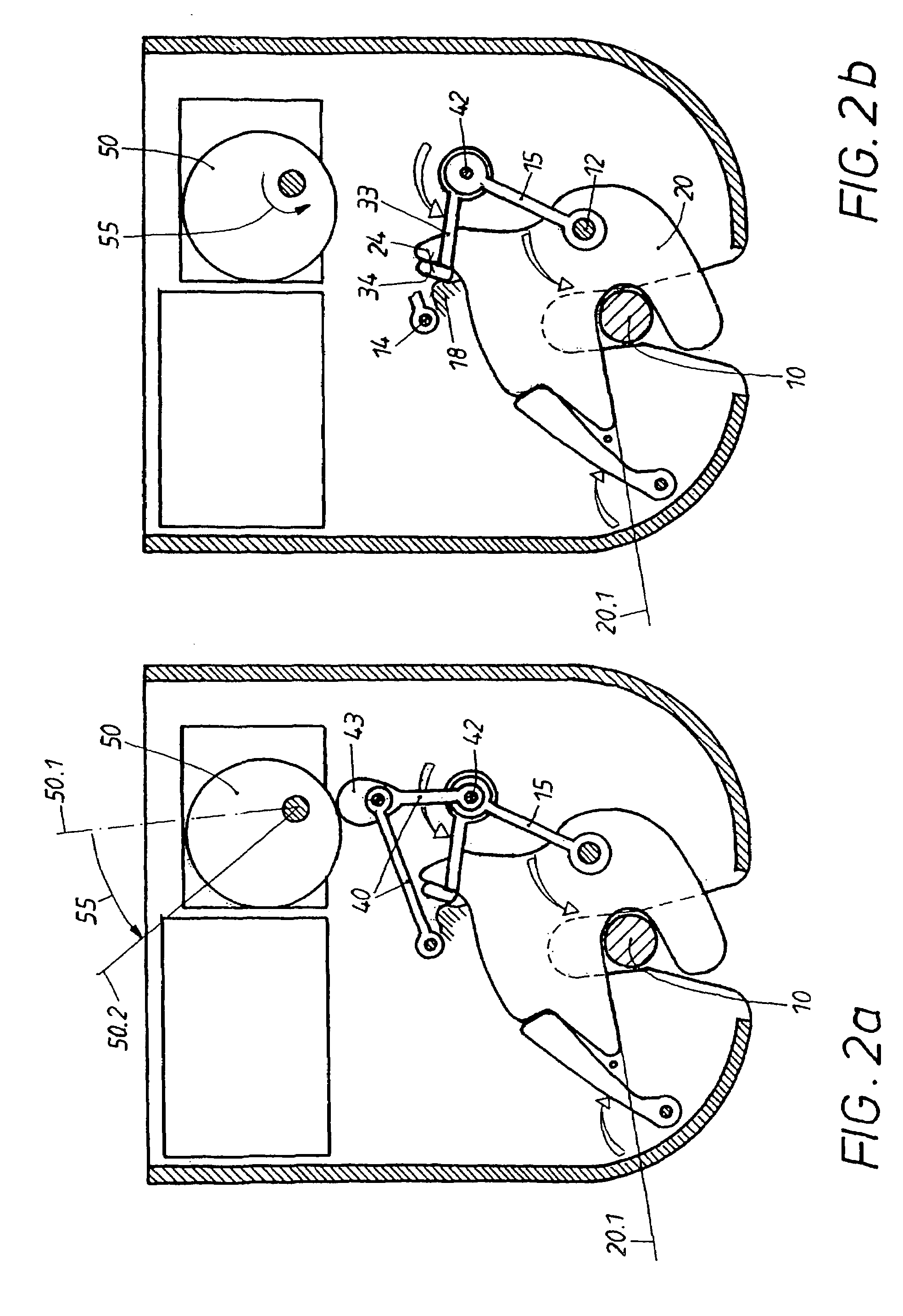Lock for vehicle doors or lids
- Summary
- Abstract
- Description
- Claims
- Application Information
AI Technical Summary
Benefits of technology
Problems solved by technology
Method used
Image
Examples
Embodiment Construction
[0018]The lock has a lock housing 11 mounted on the door and a locking part 10 seated on the door post. In the lock housing 11, a rotary catch 20, which has a receptacle 23 for the locking part 10, is seated on a first, stationary bearing pin 12. When the door is open, the rotary catch is in its open position (not shown) in the lock housing 11, where the opening of the receptacle 23 is aligned with the slot 13 in the housing 11. The rotary catch 20 is spring-loaded in the direction toward its open position, as illustrated by the arrow 25 in FIG. 1a, and when in the open position it rests against end stops (not shown).
[0019]The door is first closed manually. As this happens, the locking part 10 travels into the receptacle 23, strikes the inner sidepiece, and thus rotates the catch 20 in the direction opposite its spring loading 25 until it reaches the “pre-latching position”, characterized by the auxiliary line 20.1 in FIG. 1b. In this pre-latching position 20.1, a pawl 30, which is ...
PUM
 Login to View More
Login to View More Abstract
Description
Claims
Application Information
 Login to View More
Login to View More - R&D
- Intellectual Property
- Life Sciences
- Materials
- Tech Scout
- Unparalleled Data Quality
- Higher Quality Content
- 60% Fewer Hallucinations
Browse by: Latest US Patents, China's latest patents, Technical Efficacy Thesaurus, Application Domain, Technology Topic, Popular Technical Reports.
© 2025 PatSnap. All rights reserved.Legal|Privacy policy|Modern Slavery Act Transparency Statement|Sitemap|About US| Contact US: help@patsnap.com



